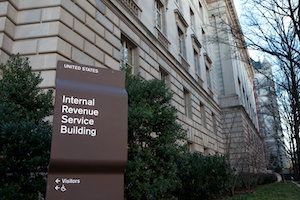The IRS’ 2007 403(b) regulations fundamentally altered the 403(b) marketplace. The imposition of those regulations of greater responsibility on 403(b) plan sponsors for maintaining the continued tax favored status of their plans triggered—among other things—efforts by a number of employers, employer related groups, and advisers to attempt to consolidate both the compliance services and the investment platforms for these plans. When you think about the typical 403(b) plan of that time, the vendors took on much of the responsibility for running these plans—something they could no longer do (as least to the extent they had done it in the past).
This resulted in the development of a wide array of what I refer to as “aggregation programs.” For example, school districts were enabled by a variety of different state and local statutes to coordinate their plans; a number of “umbrella” tax exempt organizations tried to facilitate cost-effective arrangements between their constituent organizations; a number of churches engaged in efforts to assist their brethren organizations; and, yes, 403(b) multiple employer plans (MEPs) began to be more widely used.
The 403(b) MEP is a particularly interesting arrangement. To the extent that the tax-exempt organizations participating in the MEP were covered by ERISA, ERISA Section 210 (the ERISA section which covers multiple employer plans) enabled their existence—and there are a number of them now in operation. For those organizations exempt from ERISA (such as K-13 or churches), nothing in the code prevented them from combining their compliance and investment activities, even if they were not recognized as a single 403(b) plan by the Internal Revenue Code—and many of them did.
Because the Tax Code did not make any provision for the 403(b) MEP (or other type of 403(b) “aggregation arrangement”), each of the employers participating in these arrangements are treated (for tax code compliance purposes) as each sponsoring their own 403(b) plans. This actually has worked quite well for a number of years, except for a couple of issues. The first was an annoying reporting issue: Title 1 of ERISA treats the MEP as a single plan for ERISA reporting purposes (i.e., the 5500), but the Tax Code still treated each of them as individual 403(b) plans for purposes of the IRS 5500 reporting rules. There were workarounds to meet this requirement, but it still created quite an anomaly. The second issue was always about background noise: though each of the organizations in any type of aggregation arrangement was treated as sponsoring its own 403(b) arrangement, the IRS had never really addressed publicly addressed this issue.
This is where SECURE 2.0 obliquely provided significant relief, in a couple of nice “gems.”
The first one is a section I have not seen referenced in any material on SECURE 2.0; that is, Section 106(c). This section amended the Code Section 6057 to provide that, to the extent that a 403(b) plan is “maintained by more than one employer” (e.g., the plans formed under ERISA Section 210), the plan could file a single Form 5500, instead of the arrangement otherwise fulfilling the obligation that each participating employer sponsor having to individually “register” its “plan.”
The second is the provision which is designed to dispel any doubt that an employer participating in any of the of the “aggregation arrangements” still would qualify for favorable tax treatment under 403(b). Though generally viewed as the section which enabled 403(b) pooled employer plans, (PEPs) the new Code Section 403(b)(15) (under SECURE 2.0 Section 106(a)) really was intended to have a much broader impact: it provides peace of mind that participating in a 403(b) arrangement of more than one employer (even if not a PEP) would not jeopardize their plan’s 403(b) status. Section 106(g) even provides further peace of mind to church arrangements, and how these new rules will apply to them.
403(b) MEPs really got what they needed to continue on safely. A 403(b) PEP is only necessary if the organization wants relief from the “one bad apple rule,” which—to my mind, at least—really is not a pressing need under the way 403(b) MEP rules operate.
Robert Toth is Principal at Toth Law and Toth Consulting.
Used by Permission. The original is here.
Opinions expressed are those of the author, and do not necessarily reflect the views of NTSA or its members.
- Log in to post comments
